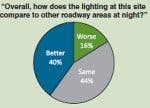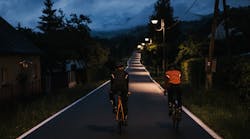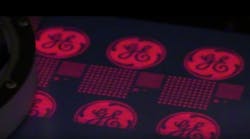The Lighting Research Center (LRC) at Rensselaer Polytechnic Institute (RPI) has released the results of a field study of LED street lighting that was fielded in an upstate New York suburban business park. The field study confirmed the energy efficiency of the LED lights and that visitors judge the lights to be equal or superior to HID (high intensity discharge) street lights.
The study was conducted by LRC's DELTA program that is sponsored by the New York State Energy Research and Development Authority (NYSERDA). Delta evaluated 16 BetaLED Edge LED luminaires that were deployed along a curved, three-lane street built to serve a new office building in North Greenbush, NY.
The Edge luminaires integrate modular LED light bars that each house 20 LEDs. Lighting specifiers select the number of bars installed in each luminaire to match the required lumen output. The DELTA test used luminaires with three light bars each, mounted 30-ft high, and spaced 130- to 180-ft apart.
DELTA compared the LED installation to a neighboring HPS (high-pressure sodium) installation in the same business park. The DELTA study sought to quantitatively measure system performance, photometric performance, energy savings, and light pollution. Plus DELTA used volunteers to evaluate the LED lights.
The full results of the study are presented in the Field Test DELTA Snapshots: LED Street Lighting report (see related links to the right).
For the human evaluation, DELTA recruited 26 volunteers to visit the field site after dark in September 2009. The participants completed a survey based on their visit with questions ranging from how safe the participants felt in the area to the ability of the participants to recognize friends in the light. Comparing the lights at a high level, 44% rated the LED and HPS lights the same. while 40% rated the LED lights superior.
The LED lights, at 79W per luminaire, use 38% less power than the HPS system. DELTA relied on Lighting Analysts' software to calculate illuminance along several hundred feet of roadway and found that the HPS system trailed the LED system in uniformity.
DELTA used the Outdoor Site-Lighting Performance (OSP) light pollution calculation techniques (developed by LRC) to compare the two installations. The LED installation did prove superior in terms of creating less light pollution. But the DELTA researchers attributed the difference more to the fact that the HPS installation was brighter than required than to the ability of LED luminaires to better control light within the test site.






